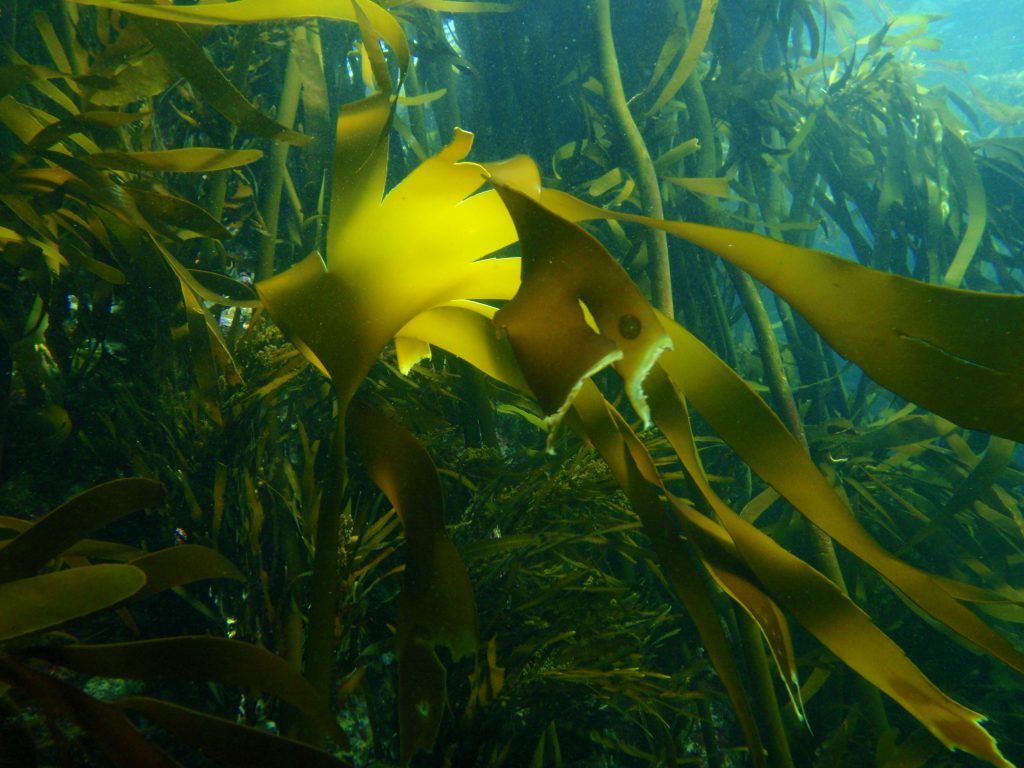
How does carbon become blue?
By disappearing into the ocean. More precisely, coastal ecosystems can remove carbon dioxide from the water which, in turn, draws carbon dioxide from the atmosphere. With that, they belong to the major players in the effort to halt climate change.
(see also Wikipedia)
At Blue Carbon Services Ltd, we're focusing our research on kelp which are the big brown seaweeds.
We believe that kelp can provide a powerful tool in the fight against the climate change.
- Many of the large brown seaweeds:
- grow fast (up to half a metre per day) removing carbon dioxide from the Earth's atmosphere much more efficiently than land plants.
- improve the quality of ocean water by making it less acidic.
- are a valuable source of nutrition for other living marine creatures and can make marine farming (eg. shellfish) more productive.
- provide a highly nutritious source of food and medicines for humans and animals.
- can be made into environmentally sustainable bio-plastics and bio-fuels to heat our homes or power our cars.
R&D Strategy
Our vision is a coastal ecosystem, which contributes to the carbon sequestration and provides excellent place for sustainable aquaculture.
We believe that the best way to achieve change is to provide opportunities for industry to obtain commercial returns from environmentally responsible activities.
We want to better understand the interactions between kelp and the other inhabitants of the ocean. With that understanding, marine farmers can grow food and other products, that are both profitable and sustainable for the planet.
Projects

In our first research project, we are studying integration of kelp into mussel farms. We want to figure out whether the increased nutrition sources and the better water quality around kelp also increases the productivity of the mussel farms.
Our research team includes scientists from the Auckland University, the University of Otago and the Universidad de Los Lagos (Chile).
The project is funded by the Endeavour Fund of MBIE and The Nature Conservancy.
A second research project being undertaken with the National Institute for Water and Atmospheric Research (NIWA) is gaining a better understanding of kelp's contribution to carbon sequestration. In this we will quantify how much and for how long natural kelp beds in New Zealand remove carbon from the atmosphere into deep-sea environments: the coastal shelf and submarine canyons leading to very deep ocean trenches.
We're also planning a similar, bigger project in cooperation with the Climate Foundation, where we want to learn more about the interactions between salmon, mussel and kelp.
We already know some amazing properties of kelp. Our goal is to learn more about these macroalgae and find ways to use them in a safe and sustainable approach to fighting climate change.